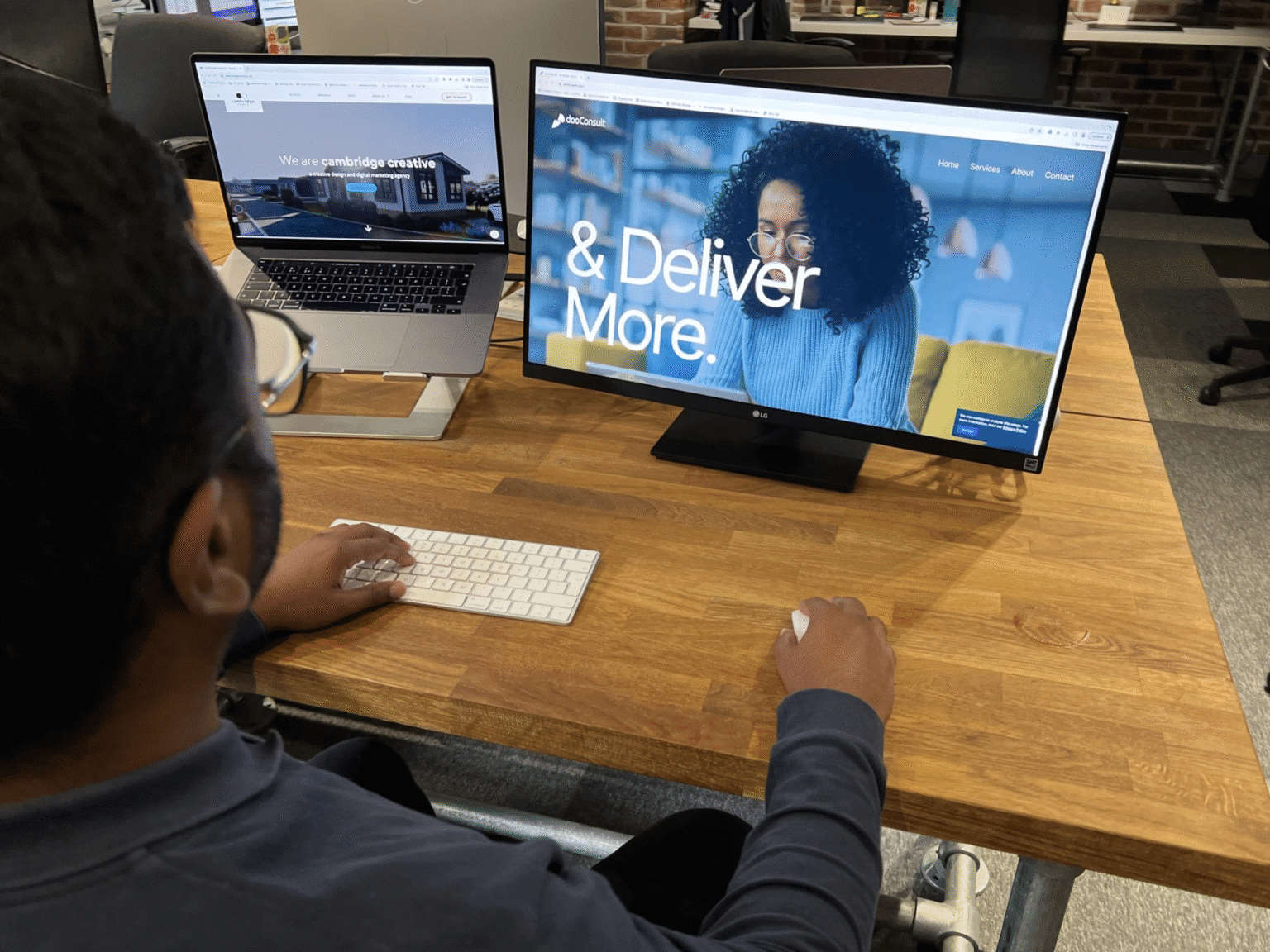Oxford has long been synonymous with academic excellence and timeless architecture. But beyond the dreaming spires, the city has quietly evolved into a vibrant hub of digital creativity and innovation. For SMEs, educational institutions, charities, and arts organisations, a strong online presence is a must.
As we move through 2025 and beyond, web design continues to evolve to meet the expectations of increasingly savvy users while keeping pace with technology. In this article, we explore the trends shaping Oxford’s creative scene and why modern web design services in Oxford are at the heart of this transformation.
Blending Tradition with Innovation: Oxford’s Unique Web Design Needs
One of the hallmarks of Oxford’s creative landscape is its ability to blend the old with the new. Local organisations — from world-renowned colleges to independent theatres and forward-thinking SMEs — often face the challenge of preserving their heritage while appealing to modern audiences.
This delicate balancing act requires more than off-the-shelf templates. Bespoke, tailored solutions are in demand to ensure that classic aesthetics coexist seamlessly with cutting-edge functionality. This is precisely what sets Oxford apart in the digital space.
With this unique backdrop in mind, let’s look at the specific trends shaping the future of web design, not just globally, but right here in Oxford.
Key Trends Shaping Web Design in Oxford (and Beyond)
Web design trends are constantly evolving, but the best endure because they meet genuine business needs and enhance user experiences. In Oxford’s dynamic creative scene, several emerging trends are already making a notable impact:
- Minimalist, Accessible, and Inclusive Design
In a city known for its diversity and culture, accessibility has become essential. By 2025, websites are expected to comply with WCAG 2.2 standards, ensuring all users — regardless of ability — can access and interact with content. Minimalist layouts reduce distractions, improve clarity, and enhance usability.
From colleges to community arts organisations, inclusive design is becoming the norm in Oxford’s web projects.
- AI-Powered Personalisation
AI has moved beyond hype to deliver real value in web design. Businesses and institutions are using artificial intelligence to personalise content, product recommendations, and calls-to-action for individual visitors. This tailored experience boosts engagement and conversion rates, vital for SMEs and creative organisations competing for attention.
- Sustainable Web Design
Oxford is home to an increasing number of environmentally conscious businesses and charities. Sustainable web design, focusing on efficient coding, lightweight assets, and green hosting, helps minimise a website’s carbon footprint. Organisations are recognising sustainability as both an ethical responsibility and a competitive advantage.
- Story-Driven Visuals and Micro-Interactions
Subtle animations, hover effects, and micro-interactions bring websites to life, making them more engaging. In Oxford’s creative industries, where storytelling is key — whether for the arts or innovative businesses — these visual elements help build emotional connections and strengthen brand narratives.
- Headless and API-First Architectures
As organisations grow, they need websites that are fast, flexible, and scalable. Headless CMS and API-first approaches separate the front end from the back end, enabling faster load times, easier updates, and seamless integration with other platforms. This approach is especially valuable for Oxford businesses expanding into e-commerce or omnichannel experiences.
- Dark Mode and Minimalist Palettes
Clean, modern aesthetics remain popular, particularly among younger and more tech-savvy audiences. Dark mode and muted, minimalist colour schemes create a contemporary look while improving user comfort, particularly for mobile users.
By embracing these trends, Oxford-based organisations are creating websites that not only look contemporary but also perform better for their users.
Why Modern Web Design is a Business Advantage in Oxford
Keeping pace with web design trends isn’t just about aesthetics — it’s about staying competitive. A modern website improves accessibility, aligns with sustainability goals, and enhances the user experience — all of which help boost SEO, engagement, and conversions.
It also enables Oxford’s organisations to compete effectively with larger, London-based rivals while maintaining the distinctive charm their audiences value.
For businesses ready to elevate their online presence, choosing the right partner is critical.
How to Choose the Right Partner for Modern Web Design Services in Oxford
The right agency can craft a website that reflects your brand, meets technical and accessibility standards, and delights users. When evaluating potential partners, look for:
- A strong portfolio of both heritage and modern clients.
- A deep understanding of Oxford’s creative and business culture.
- Expertise in accessibility, sustainability, and Microsoft/cloud integration.
These qualities ensure your website is not only visually striking but also robust, compliant, and future-ready.
The Bottom Line
Oxford’s creative scene shows how tradition and innovation can coexist to create exceptional digital experiences. From user-centred design and sustainability to immersive storytelling and seamless integration, web design here is both globally informed and distinctly local.
For businesses and organisations ready to embrace the future, working with modern web design services in Oxford can help ensure your digital presence is not only current but also memorable and impactful.

